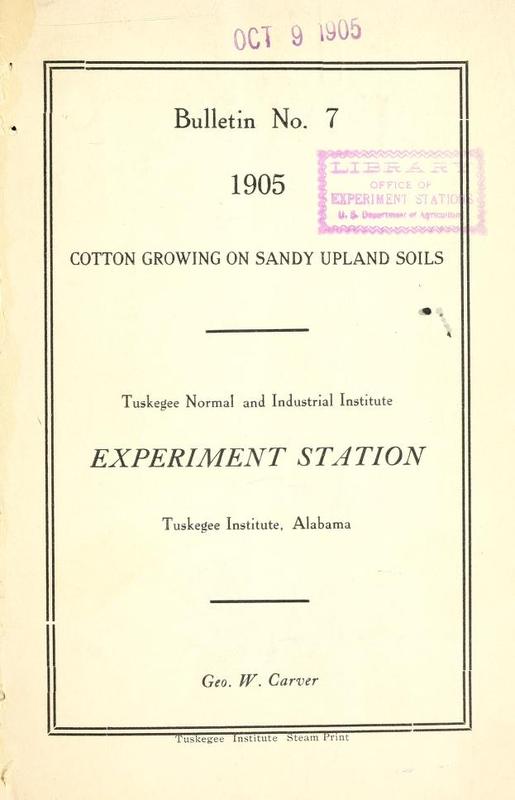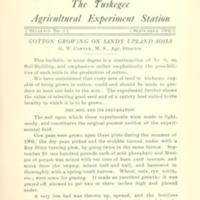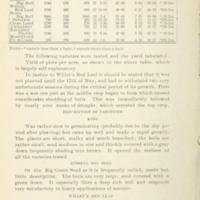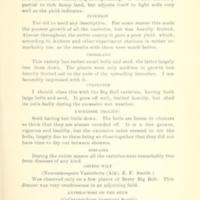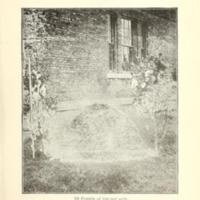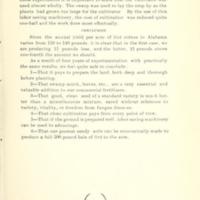Cotton Growing on Sandy Upland Soils
Creator
Date
1905
Excerpt
This bulletin, in some degree is a continuation of No.6, on Soil Building, and emphasizes rather emphatically the possibilities of such soils in the production of cotton.
We have maintained that every acre of land in Alabama capable of being grown in cotton, could and should be made to produce at least one bale to the acre. The experiment further shows the value of selecting good seed and of a variety best suited to the locality in which it is to be grown.
THE SOIL AND ITS PREPARATION
The soil upon which these experiments were made is light, sandy, and constitutes the original poorest section of the experimental field.
Cow peas were grown upon these plots during the summer of 1908; the dry peas picked and the stubble turned under with a Boy Dixie turning plow, by going twice in the same furrow. September 20, one hundred pounds each of acid phosphate and Muriate of potash was mixed with ten tons of barn yard manure and muck from the swamp, mixed half and half, and harrowed in thoroughly with a spring tooth harrow. Wheat, oats, rye, vetch, etc., were sown for grazing. It made an excellent growth; it was grazed off, allowed to get two or three inches high and plowed under.
A very low bed was thrown up, opened, and the fertilizer (which consisted of the same kinds and quantity used for the small grain) was put directly into the furrow and the seed planted upon it, covering the same with a scooter. The seed were all planted April 22, and fertilized as per above, unless otherwise stated.
We have maintained that every acre of land in Alabama capable of being grown in cotton, could and should be made to produce at least one bale to the acre. The experiment further shows the value of selecting good seed and of a variety best suited to the locality in which it is to be grown.
THE SOIL AND ITS PREPARATION
The soil upon which these experiments were made is light, sandy, and constitutes the original poorest section of the experimental field.
Cow peas were grown upon these plots during the summer of 1908; the dry peas picked and the stubble turned under with a Boy Dixie turning plow, by going twice in the same furrow. September 20, one hundred pounds each of acid phosphate and Muriate of potash was mixed with ten tons of barn yard manure and muck from the swamp, mixed half and half, and harrowed in thoroughly with a spring tooth harrow. Wheat, oats, rye, vetch, etc., were sown for grazing. It made an excellent growth; it was grazed off, allowed to get two or three inches high and plowed under.
A very low bed was thrown up, opened, and the fertilizer (which consisted of the same kinds and quantity used for the small grain) was put directly into the furrow and the seed planted upon it, covering the same with a scooter. The seed were all planted April 22, and fertilized as per above, unless otherwise stated.
Title
Cotton Growing on Sandy Upland Soils
File(s)
Cotton Growing on Sandy Upland Soils cover.jpg
(image/jpeg)
Cotton Growing on Sandy Upland Soils 1.jpg
(image/jpeg)
Cotton Growing on Sandy Upland Soils 2.jpg
(image/jpeg)
Cotton Growing on Sandy Upland Soils 3.jpg
(image/jpeg)
Cotton Growing on Sandy Upland Soils 4.jpg
(image/jpeg)
Cotton Growing on Sandy Upland Soils 5.jpg
(image/jpeg)
Cotton Growing on Sandy Upland Soils 6.jpg
(image/jpeg)
Cotton Growing on Sandy Upland Soils 7.jpg
(image/jpeg)
 An official website of the United States government.
An official website of the United States government.


